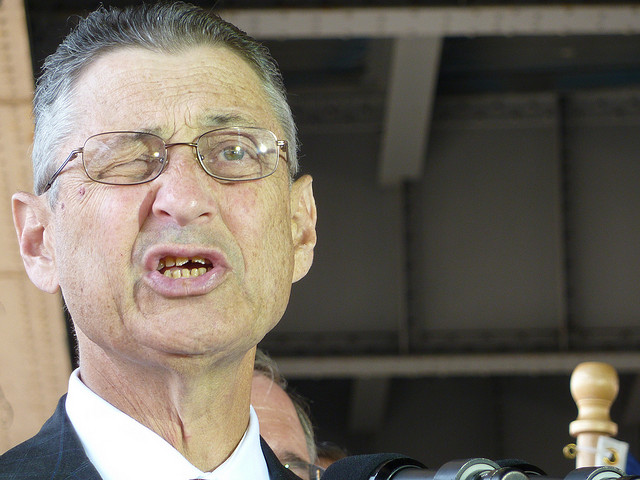The “days since a New York state legislator has been indicted” clock was reset to zero yesterday, as Sheldon Silver, the powerful Democratic state assembly speaker, was taken away in handcuffs. It has yet to be seen if the charges, brought by politically ambitious U.S. Attorney Preet Bharara and related to work he did (or didn’t do) at two private law firms, will stick – Bill de Blasio and Assembly Democrats are circling the wagon (“If you can’t kill the king, you don’t shoot at him,” said another indicted assembly speaker, Mel Miller).
But still, it’s worth pondering what New York – and especially its urban landscape – might look like without Shelly.
Scaffold law
While Silver is generally viewed by the real estate industry as a friend, his primary allegiance is to the state’s trial lawyers, and when the two come in conflict, the latter wins out.
Nowhere is this more obvious than with New York state’s so-called scaffold law, which imposes 100 percent liability on contractors and property owners for “gravity-related” accidents. This manifests itself largely as higher insurance costs, with the most notable example being the city’s School Construction Authority, whose annual payments are rising well beyond $100 million. The New York Building Congress puts construction insurance tabs in the state at around 10 percent of total project costs, double (or more) what those in other states pay.
Sheldon Silver, however, refused to allow reform to the 1885 law in 2013, despite the Bloomberg administration joining the calls to rework the law. And last year, Cuomo wouldn’t even try, citing the influence of trial lawyers in Albany.
Perhaps not coincidentally, Sheldon Silver has been cashing checks for his part-time job with Weitz & Luxenberg, a large personal injury law firm that has reaped the rewards of the scaffold law.
Were Shelly to finally fall, an assembly speaker without intimate ties to the state’s trial lawyers might be more amenable to changing the law, which would go a long way to reducing the city’s sky-high construction costs.
The MTA
Sheldon Silver has long been seen as a friend to New York City in Albany, though he has somewhat of a mixed record when it comes to the MTA.
On the one hand, he’s been an ardent champion of the Second Avenue subway, which would eventually improve transit access to his under-served Lower East Side neighborhood.
On the other hand, he hasn’t been much interested in the agency’s sky-high costs or reforming them. So long as the MTA continues to plug away at the Second Avenue subway, he is more than happy to fund their capital plan, no matter the waste.
With no movement on the cost side of the equation, the focus of city and state pols has been on the revenue side, with some proposing congestion pricing – a tax on cars entering the most congested part of Manhattan – as a possible additional funding source. Bloomberg made the best effort to impose the charge, but was rebuffed in Albany. There was opposition from many quarters, but Bloomberg pleaded with Shelly to try to sway his caucus, knowing that when the speaker wants something bad enough, he can usually get it. But Silver refused – New York Magazine suggested that he was against it, personally – and would not even bring the issue to a vote in his chamber.
While we aren’t necessarily optimistic, it’s possible that a new assembly speaker would bring a fresh set of eyes to the problem of the MTA’s costs and revenues, more willing to grapple with the former and find inventive new sources of the latter.
Talk about this topic on the YIMBY Forums
For any questions, comments, or feedback, email newyorkyimby@gmail.com
Subscribe to YIMBY’s daily e-mail
Follow YIMBYgram for real-time photo updates
Like YIMBY on Facebook
Follow YIMBY’s Twitter for the latest in YIMBYnews





